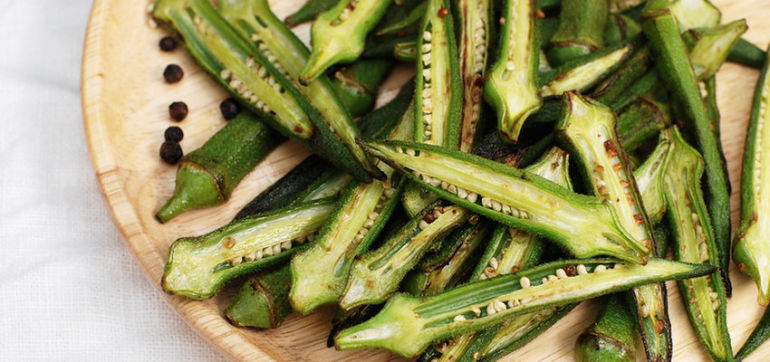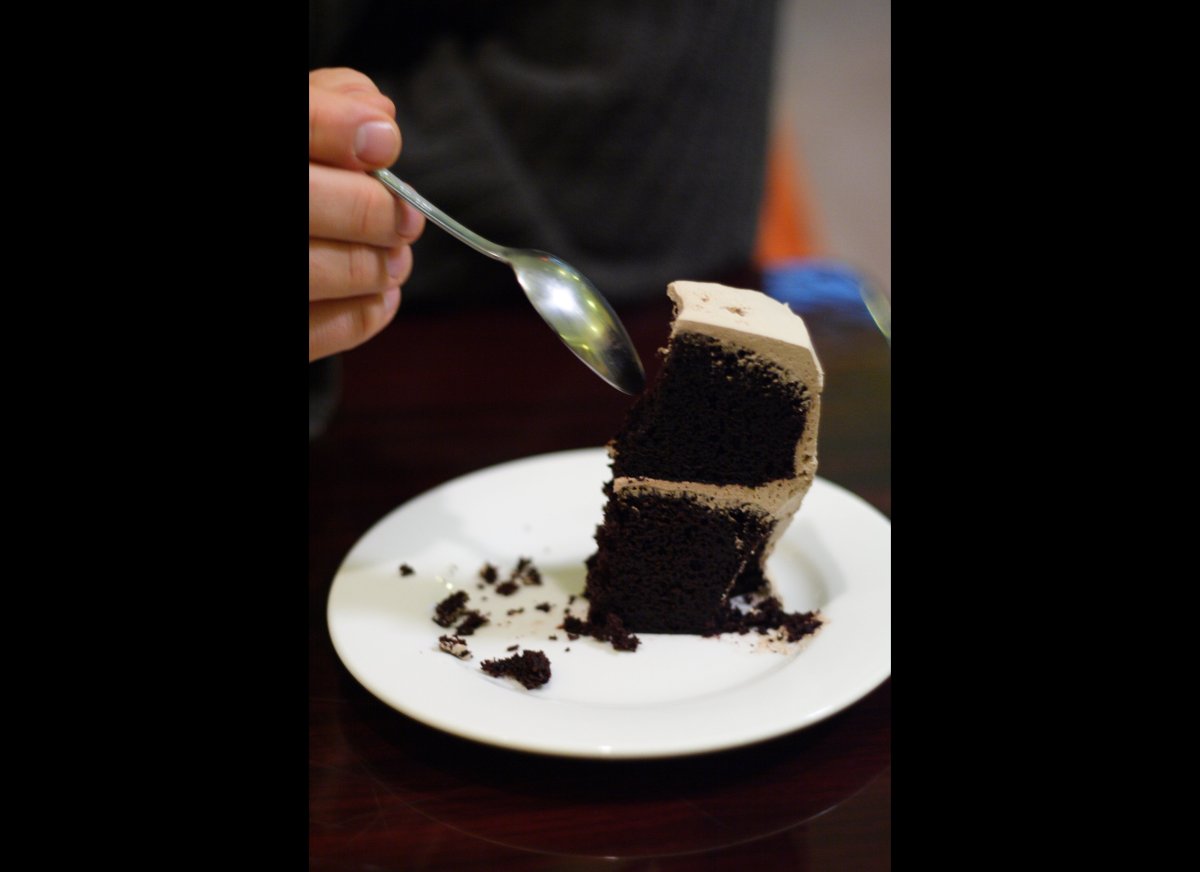10 Hydrophilic Foods That Keep You Fuller For Longer

These foods love water, and I love them for it!
1. Chia seeds
The chia seed — a small black or white seed with the capacity to absorb water up to 12 times its weight! They're a "hydro-boosting" food with the ability to encourage satiety.
Chia's ability to hold on to water also means you maintain hydration and retain electrolytes. And when your body is properly hydrated, nutrients from the foods you ingest are absorbed more efficiently. Since chia seeds swell in volume when mixed with liquid and have no discernible flavor, they can bulk up your favorite snacks and meals, displacing calories without compromising taste!
If all that doesn't make it a superfood already, these little seeds also contain eight times more omega-3s than salmon, 30 percent more antioxidants than blueberries, 25 percent more fiber than flax, three times more iron than spinach, 15 times more magnesium than broccoli, six times more calcium than milk and two times more potassium than a banana.
2. Okra
Okra is a fantastic vegetable that I revere for its slime factor! It is known for being high in hydrophilic (soluble) fiber due to its great mucilage content.
Many people shy away from okra because of its slimy consistency, but it's easy to alleviate the goo factor when you add okra to stews, soups, and stir-fries. Okra is high in vitamins A, B6, and C; folate; calcium; iron; and magnesium. When okra is added to your meals, you won't be hungry for hours.
3. Oatmeal
This happens to be a favorite of many nutrition enthusiasts. It is absolutely my number-one choice for breakfast because of its ability to satiate. Add chia seeds to oatmeal and there is no better way to start your day! You will be happy to hear that in addition to soluble fiber, oatmeal has 6 grams of protein per serving. It also contains the minerals phosphorus, potassium, selenium, manganese, and some iron.
But which oats do you buy? This is a common concern among my clients who want to make oatmeal a staple in their diet. There are three types of oats on the market: steel-cut, rolled (old fashioned), and quick (instant). Steel-cut oats are the least processed and require the most cooking time. Old-fashioned oats are steam-processed and rolled into oats that stay fresh for longer periods, with a cooking time of between 5 and 10 minutes. Quick or instant oat flakes have been steamed longer and flattened more than rolled oats, so they cook the fastest.
In the USDA's nutrient database, all of the different types of oats show the same nutritional profile. The difference, however, is in how they are digested. Instant oats digest the fastest since they are processed to cook quickly. And when a food digests quicker, it does not keep you as full.
4. Pears
I encourage my clients to eat fruits. Lots of them. I particularly stress the high-hydrophilic fruits that contain pectin. We have all heard an apple a day keeps the doctor away; well, so does a pear. Pears actually have more pectin than apples. And like other high-hydrophilic foods, they help with digestion, lowering your cholesterol and regulating your body's absorption of sugar.
When you eat the fiber-rich skin along with the flesh, you're even better off. The skin contains the antioxidant quercetin, which prevents cancer and artery damage that can lead to heart problems.
5. Barley
Barley is a fantastic hydrophilic grain, with an exceptional capacity to absorb water. It also has a delicious nutty flavor and pasta-like texture, which is why it is one of my favorite grains to add to salads, soups, and side dishes. It's even good to swap for oatmeal in the morning for a change. In the store, you'll find hulled, pearled, and pot barley. Go for the pot barley. It's between hulled and pearled in terms of how much it's been processed. And it retains its nutritive punch while being the easiest to work with.
6. Brussels sprouts
Brussels sprouts are part of the cruciferous vegetable family, and the American Cancer Society includes them as a key dietary recommendation. The cancer protection we get from Brussels sprouts is largely related to four specific glucosinolates: glucoraphanin, glucobrassicin, sinigrin, and gluconasturtiin. All cruciferous vegetables contain glucosinolates, and these phytonutrients are important for our health because they are the chemical starting points for a variety of cancer-protective substances. In short, cruciferous vegetables detoxify.
7. Kidney beans
The truth of the matter is that all beans are high-hydrophilic foods. I picked kidney beans because I love them in chili-like soups, and they are almost always an option at make-it-yourself salad bars.
One of the points I stress to clients is that you can choose beans as your protein in a salad to replace the usual chicken, turkey, or tuna fish. When doing so, the portion is hefty (1 cup) and very satisfying. Red beans, like kidney beans, also have a very high antioxidant value.
8. Chickpeas
Chickpeas are high in hydrophilic fiber and keep you full for hours.
9. Oranges
Whole oranges are chock-full of hydrophilic fiber. They contain a lot of belly-filling pectin.
I love oranges as a between-meals snack with pistachios or almonds. I now want to make a plea: Do not peel away the thick, white outer layer that comes off in strings and dump it in the compost pile. It is quite a tedious task and totally unnecessary! This layer is called the pith, and it's part of the reason why the orange is so wonderful. The pith contains a lot of the pectin in addition to nearly the same amount of vitamin C as the flesh. So save yourself time and effort, and just eat it.
Oranges are also a wonderful source of phytochemicals, vitamin A, B-complex vitamins, potassium, and calcium.
10. Agar
Sometimes referred to as agar or kanten, it is a gelling agent made from seaweed and widely used in Southeast Asia. Agar is 80 percent hydrophilic fiber (just add water and the flakes swell up into a thick gel). It has no calories, no carbs, no sugar, no fat — just fiber. Its hydrophilic fiber reabsorbs glucose in the stomach, passes through the digestive system quickly, and inhibits the body from retaining and storing excess fat. Its water-absorbing properties also aid in waste elimination. Agar absorbs bile, and by doing so, it causes the body to dissolve more cholesterol.
Adapted from "The HD Diet" by Keren Gilbert. Copyright (c) 2014 by Keren Gilbert. By permission of Rodale Books. Available wherever books are sold.
Photo Credit: Shutterstock
-
Drinking apple cider vinegar for weight loss seems far-fetched. Does it work?
Apple cider vinegar isnt likely to be effective for weight loss. Prop
-
Bike ride to lose weight - Tips for Beginning A Bicycling Plan
In case you are one of those individuals
-
Foods Fit Different Blood Types
In everyday life, you may be so busy that you dont have time to have b
-
10 Weightloss Tips That Guarantee Success
There is so much conflicting information
-
Are Herbal Weight Loss Products Safe?
Many of us say that herbal weight reduction products are safe to take
-
Choosing The Right Weight Loss Pill
Over the years, weight loss is a hot issue across the globe for major
- DON'T MISS
- Cardiovascular Exercise Program For You
- Hoodia, The Miracle Drug
- Does the Cause of Your Weight Problem Really Matter?
- Variety of Swift Weight Reduction Ideas
- How To Decide On The Best Fat Loss Products For You
- 4 Ways in which coconut oil helps you lose weight
- Some Tips to Avoid Weight Gain
- Best Weight Loss Website
- Lose Weight Playing Golf
- False-Starts




